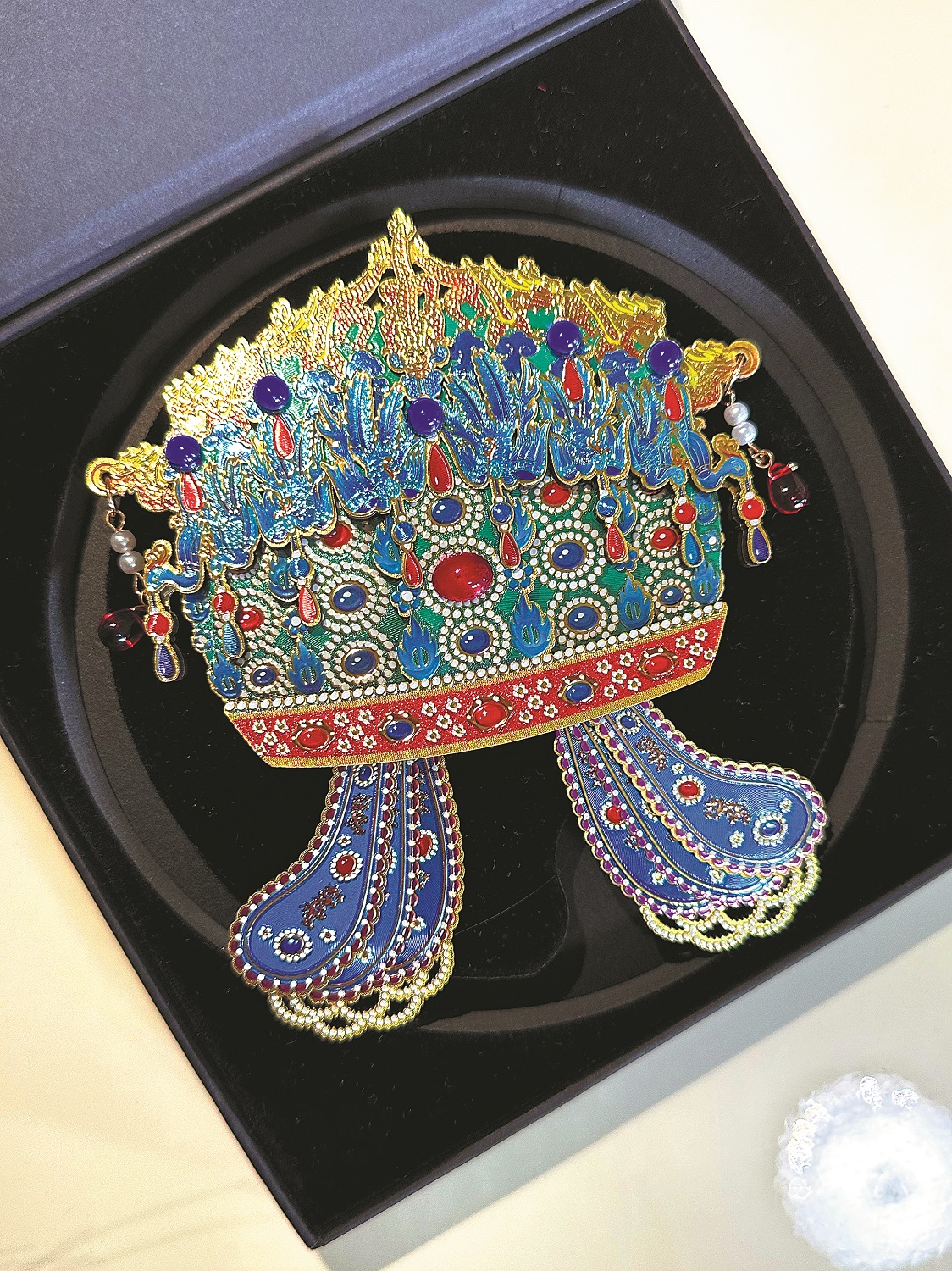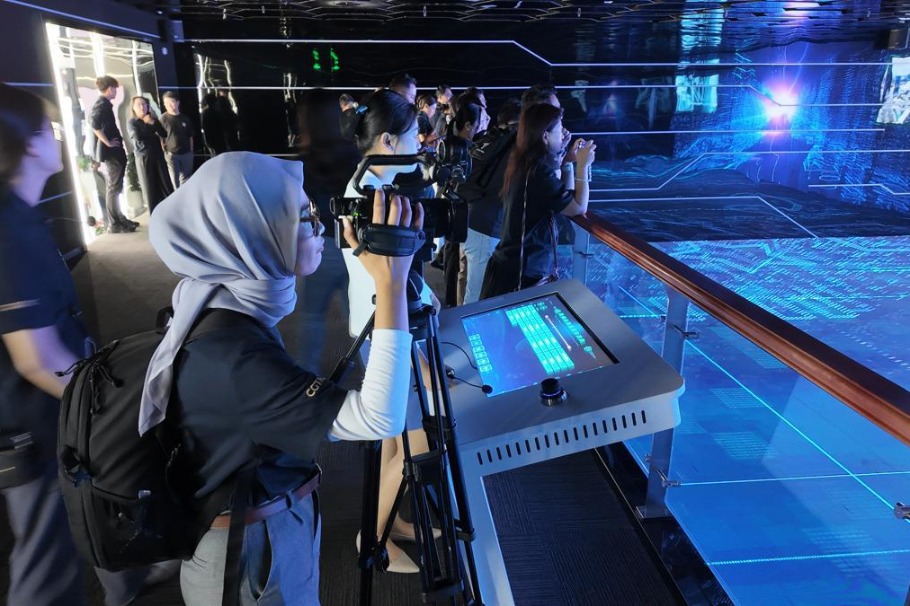Fridge magnets prove hot sales items at museums


"How can I buy the fridge magnets of the phoenix coronet?" This is the most frequently asked question at gift shops of the National Museum of China in Beijing, and a typical response is, "You should be able to get one if you arrive before 7:30 am."
Recently, fridge magnets inspired by the phoenix coronet of Empress Xiaoduan from the Ming Dynasty (1368-1644) have gone viral on social media, with a flood of posts sharing purchase experiences, attracting large crowds to the museum shop.
The phoenix coronet is one of the museum's most famous exhibits. Adorned with nine phoenixes and nine dragons and embellished with thousands of pearls and hundreds of rubies and sapphires, it was worn by Empress Xiaoduan during visits to the ancestral temple. Notably, it is listed among the Chinese cultural relics forbidden to be exhibited abroad.
The magnets come in both wood and metal styles, and are delicately crafted to reflect the coronet's original design. Upon closer inspection, they reveal subtle lines and patterns that mimic the texture of the real artifact.
Thanks to their popularity, over 80,000 magnets have been sold within just three months, contributing to merchandise sales exceeding 10 million yuan ($1.4 million), said Liao Fei from the museum's operation and development department, according to a report in Beijing Daily.
Given the intricacy of the magnets, the daily production capacity has already reached its limit, Liao said. To manage the influx of eager buyers, a numbering system has been implemented, with 1,300 numbers available each day and a limit of two magnets per person.
"I came here just for the magnets," one visitor lamented after learning that all of the numbers had been distributed for that day. "I have visited the museum several times, but today was solely for the magnets, not the exhibits," she said.
While some visitors who didn't secure a magnet left disappointed, others who completed their purchases proudly showcased them in photos.
"I arrived at the museum at around 6:30 am and got number 150," said a Beijing resident in her 20s who asked to be identified only with her family name Yu, while clutching her magnets. "This is my second visit, and I am here specially for the magnets."
Inside the museum, it's common to see visitors carrying bags filled with these magnet souvenirs.
"These magnets are both beautiful and meaningful, given that the artifact itself is here," said a tourist surnamed Zhou from outside Beijing who arrived at around 7 am.
According to the gift shop staff, the magnets are not exclusive to the museum, as they are also available on various online platforms but only in limited quantities each day.
The strong demand for cultural merchandise is not a new phenomenon. Across China, museums have introduced unique cultural and creative products inspired by their collections, with fridge magnets emerging as the most popular item. Numerous magnets have gained traction nationwide.
For instance, the magnet based on the heavenly palace cauldron ceiling, which is exhibited in the Beijing Ancient Architecture Museum, has seen sales of more than 30,000, according to the museum. The complexity of its design, featuring multiple layers of miniature palace buildings, also restricts its production, leading to it frequently being sold out.
At Hangzhou Museum in Zhejiang province, a fridge magnet shaped like a "little pink cup" has become highly sought after, and around 40,000 of these have been sold since late July. This magnet is inspired by a shadowy blue glaze high-foot cup with red underglaze from the Yuan Dynasty (1271-1368), and reflects superior porcelain production skills.
As the popularity of merchandise draws greater attention to the artifacts and the museums themselves, the synergy between creative cultural merchandise and historical artifacts benefits both.
But it is hoped that visitors will still give more attention to the museums, and understand the profound culture within them, rather than just wait in a long line, buy some cultural and creative products, take a few photos and leave, staff members of the museums said.
Li Shangyi contributed to this story.
- Guests from around 30 countries and global bodies attend Beidou summit in Hunan
- Hunan University preserves legacy of wartime history
- Former Shanxi official faces bribery charges in Beijing
- China-led geoscience projects in Saudi Arabia make substantial progress
- 'Chinese Bridge' contest showcases 76 international students in Tianjin
- Jiangsu farmers celebrate bumper harvest with festivities and flavors





































